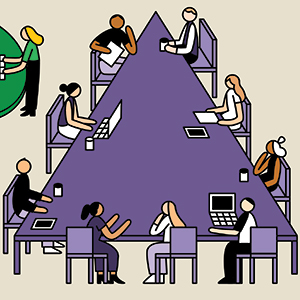New Year’s Resolutions for Leaders of Social Change (Blog)

A ‘Pull’ Approach to Scaling Proven Nonprofits (Blog)
September 24, 2024 Nonprofits & NGOs
A list of SSIR articles to help your team define and achieve its goals for doing better in 2020.
By SSIR Editors
Jan. 1, 2020
(Photo by iStock/Barcin)
The outsized need for innovative solutions to today’s social problems can leave nonprofit leaders feeling overwhelmed, and uncertainties about the economy and political landscape can compound the anxiety. Yet organizations still need to grow and evolve, and the New Year offers an opportunity to re-examine and refresh old goals while creating new ones. Read on for insight into moving your team forward in 2020.
How to Get Your Funding and Fundraising in Order
Ten Nonprofit Funding Models

Before the Next Recession, Philanthropy Needs to Redefine Efficiency

Behavioral Economics and Donor Nudges: Impulse or Deliberation?

How to Build a Stronger Organization
How Leaders Can Strengthen Their Organizational Culture

Building Movements, Not Organizations
Creating a healthy, humane world will require more than new organizational designs. It will take rethinking the nature of organizations entirely.
Mission Matters Most

How to Plan for the Future
Eight Practices for Strategic Agility

How Adaptive Strategy Is Adapting
New developments from the disciplines of innovation, data science, and implementation management are teaching us that good strategy isn’t just about setting your destination and path, it’s also about how you execute and adjust over time.
Five Essentials of Strategic Planning
A culture of strategic planning can provide a framework for aligning priorities, making decisions, allocating resources, and measuring impact.
How to Improve DEI Efforts
‘Checkbox Diversity’ Must Be Left Behind for DEI Efforts to Succeed

How Reverse Mentoring Can Lead to More Equitable Workplaces

Three Ways to Improve Diversity, Equity, and Inclusion in Philanthropy

How to Work Together
How Philanthropic Collaborations Succeed, and Why They Fail

Cutting Through the Complexity: A Roadmap for Effective Collaboration

Community System Solutions Framework Offers an Alternative to Collective Impact Model

How to Engage the Public
The Science of What Makes People Care

Community Engagement Matters (Now More Than Ever)

Keeping People Engaged in Your Cause With Help From Behavioral Science

How to Encourage Innovation
Design Thinking for Social Innovation

Is Your Nonprofit Built for Sustained Innovation?
Six useful starting points for nonprofits that want to build their capacity to continuously innovate.
Asking Questions About Sustainability, Scale, and Systems Change


